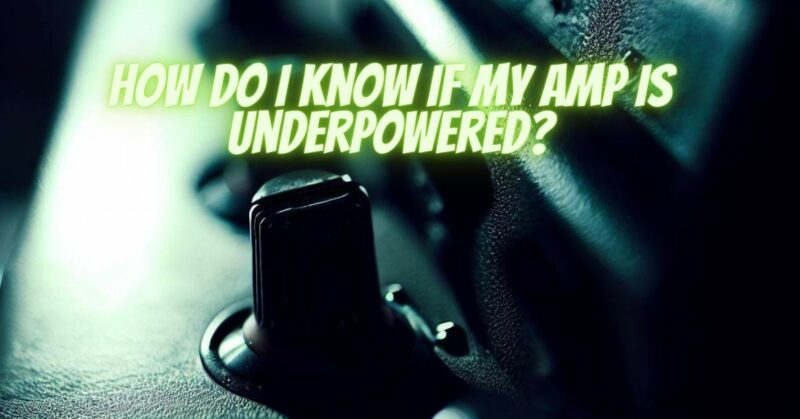Ensuring that your audio system is properly matched is crucial for optimal performance. When it comes to amplifiers, the question often arises: “How do I know if my amp is underpowered?” In this article, we will explore some telltale signs that can help you identify if your amplifier is delivering insufficient power to your speakers.
- Distorted or Clipped Sound: One of the most evident signs of an underpowered amplifier is distorted or clipped sound. When the amplifier lacks sufficient power to meet the demands of the speakers, it may struggle to reproduce the audio signal accurately. This can result in audible distortion, particularly during high-energy passages or at higher volume levels. Clipping occurs when the amplifier is pushed beyond its power limits, causing the waveform to become distorted and resulting in a harsh, unpleasant sound.
- Inability to Reach Desired Volume Levels: If you find that you are consistently pushing the volume knob on your amplifier to maximum levels but still can’t achieve the desired volume, it could be an indication of an underpowered amplifier. Insufficient power delivery restricts the amplifier’s ability to drive the speakers effectively, resulting in limited volume output. This can be particularly noticeable in larger rooms or when using speakers with higher power requirements.
- Lack of Dynamic Range: Dynamic range refers to the difference between the quietest and loudest parts of an audio signal. An underpowered amplifier may struggle to reproduce the full dynamic range of the music, resulting in a compressed or flat sound. The lack of power can lead to reduced impact, diminished transient response, and an overall loss of detail and excitement in the audio reproduction.
- Speaker Distress or Damage: Underpowered amplifiers can place excessive strain on speakers, potentially causing damage over time. When an amplifier lacks the necessary power to properly control the speaker’s motion, it can result in distortion, reduced clarity, and compromised bass response. If you notice any signs of speaker distress, such as buzzing, rattling, or overheating, it may be an indication that your amplifier is underpowered for your speakers.
- Inability to Drive Low-Impedance Loads: Some speakers have lower impedance ratings, such as 4 ohms, requiring an amplifier capable of driving such loads. If your amplifier struggles to handle low-impedance speakers, it may be underpowered for the task. The amplifier may overheat, exhibit increased distortion, or even shut down to protect itself from the demanding load.
Conclusion:
Identifying whether your amplifier is underpowered requires attentiveness to audio cues and an understanding of your system’s performance expectations. Keep an ear out for distorted or clipped sound, an inability to reach desired volume levels, compromised dynamic range, and signs of speaker distress. Additionally, ensure that your amplifier can handle the impedance requirements of your speakers. If you suspect your amplifier is underpowered, consider upgrading to a more suitable amplifier that can deliver the necessary power for your speakers, providing a balanced and satisfying audio experience.


